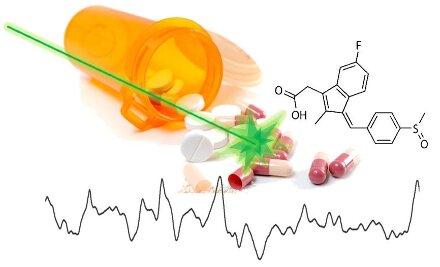Absolute Configuration of Chiral Sulfoxides

Many of the most important molecules for living systems are chiral as, e.g., nearly all amino acids and monosaccharaides whose self-assembly give rise to the constitution of proteins, sugars and nucleic acids, respectively. Beyond molecular chirality, the so-called chiral molecular recognition phenomena, that imply the stereoselective interaction between a chiral molecule and a chiral receptor, are ubiquitous and control a vast number of biological processes, such as enzymatic catalysis or neurotransmission.
Most of the newly developed drugs contain at least one chiral molecule as its main active component. Thus, international regulatory agencies, such as the FDA, have become increasingly severe requiring both enantiomers of a chiral drug formulation to be tested individually for their therapeutic and adverse effects before its commercialization. In the drive to create safer, more effective drugs for the treatment of diseases such as cancer, Parkinson’s, and other health challenges, researchers are stepping up efforts to produce purer substances based on a molecule's unique chirality. Single enantiomer formulations are now taking a commanding priority on the market due to the fact that some single-enantiomer formulations can provide greater selectivity to their biological targets, and often yield improved therapeutic indices and/or better pharmacokinetics than the racemic formulations.
The high and increasing interest in chiral single-enantiomer drugs and the legal requirements to fully characterize the chiral identity during drug substance specifications has spawned a large interest in the development of reliable methods to assign the absolute configuration (AC). Among the range of methods that can in principle be used for the assignment of the AC, X-ray diffraction (XRD) and nuclear magnetic resonance (NMR) are the most widely used. Despite their undisputed importance and reliability, these methods often require a rather significant amount of effort and resources. For this reason, there is great interest in alternatives that allow establishing the AC by measurements directly in solution. In this regard, chiroptical spectroscopy offers the possibility to distinguish between enantiomers based on their different response to electromagnetic radiation of different handedness. Raman optical activity (ROA) and vibrational circular dichroism (VCD), two complementary chiroptical spectroscopies jointly referred as vibrational optical activity (VOA) techniques, which are based on vibrational transitions, are exquisitely sensitive to molecular structure and conformation.
This research is intended to develop a reliable methodology for determining the AC of chiral drugs containing sulfoxide (SO) groups, which are widely used in the pharmaceutical industry as they increase the lipophilic and hydrophilic properties of drug candidates. SO groups can be considered as stereogenic centres because of their high activation energies for inversion (ca. 145 - 175 kJ mol-1) that avoid enantiomers to interconvert. State-of-the-art quantum chemistry calculations together with ROA and VCD experiments are to be employed to create a theoretical-experimental spectral database for a series of model chiral SOs. Effects related to solute-solvent interactions and concentration-dependent effects will be analysed in detail both from a theoretical and experimental point of view. The ultimate objective of this research is to assess the capabilities of ROA and VCD in AC determination of actual SO-containing chiral drugs by taking advantage of the comprehensive parameter study previously performed using model SOs.